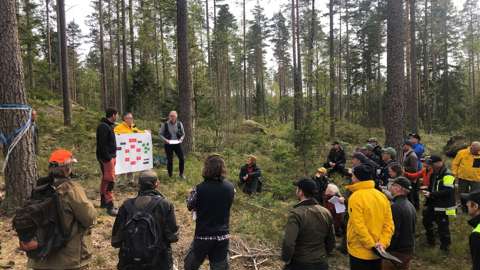Current knowledge about continuous cover forestry in Boreal Nordic Countries

In this book the research results, mainly from Finland, Sweden and Norway, are compiled as a basis for describing the current state of knowledge about, and experience of, forestry using methods without clearcutting. “Without clearcutting” opens for a multitude of definitions and ambiguities. Clearcutting is the prevailing method of wood procurement in the three countries, involving a final felling of forests, creating clearcuts that are then regenerated to form even-aged stands. In this book, forest management methods that involve no clearcutting are addressed, and throughout the text it is called continuous cover forestry (CCF).
The focus is on forestry and silviculture in the three Nordic countries, Norway, Sweden and Finland, now and in the near future, with the assumption that needs and demands relating to the ecosystem services will remain the same as today. The geographical framework is the boreal forest of the Fennoscandian Peninsula, a region dominated by coniferous forests of primarily Norway spruce (Picea abies) and Scots pine (Pinus sylvestris). The most common broadleaves in the region are silver and downy birch (Betula pendula, Betula pubescens), aspen (Populus tremula), and alder (Alnus incana, Alnus glutinosa). The climate is shaped by the northerly latitude, with large contrasts between winter and summer light and temperatures but is also influenced by proximity to the Atlantic current, the Gulf Stream, which moderates cold winter temperatures.
The idea of writing this book originates from the increasing interest in CCF among practitioners, politicians and society in general. There was a need to compile and summarise the present knowledge. The potential reader of the book (you) is someone who has, in some way, invested in learning more about the boreal forest and/or the use of forest products and ecosystem services. You may be a forest owner, forest worker, timber buyer, farmer, or reindeer herder, or you may simply be interested in forests and how they are managed. The text offers valuable information for researchers and students of natural resources, and for any students who want to learn more about CCF. The aim of the book is to give an overview of the complexity and scope of the subject in the region, and to provide pathways to further reading and inspiration.
We will review and publish your comment as soon as possible.

